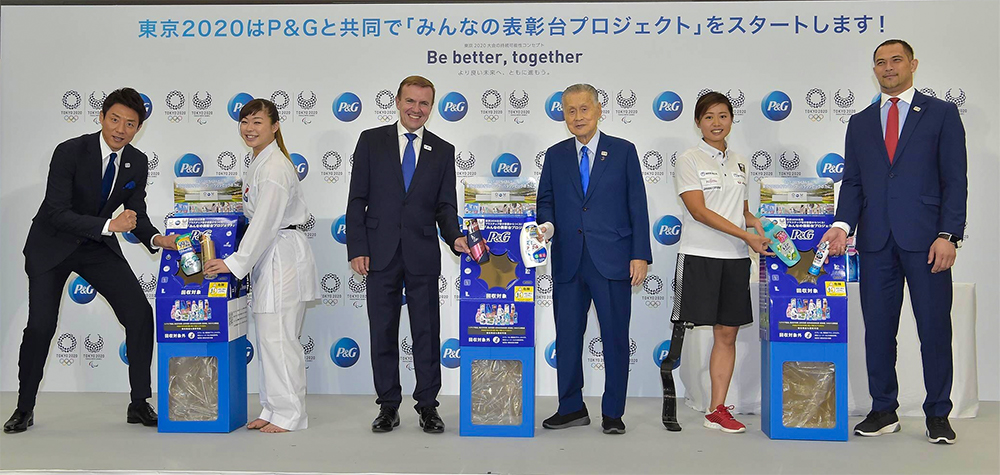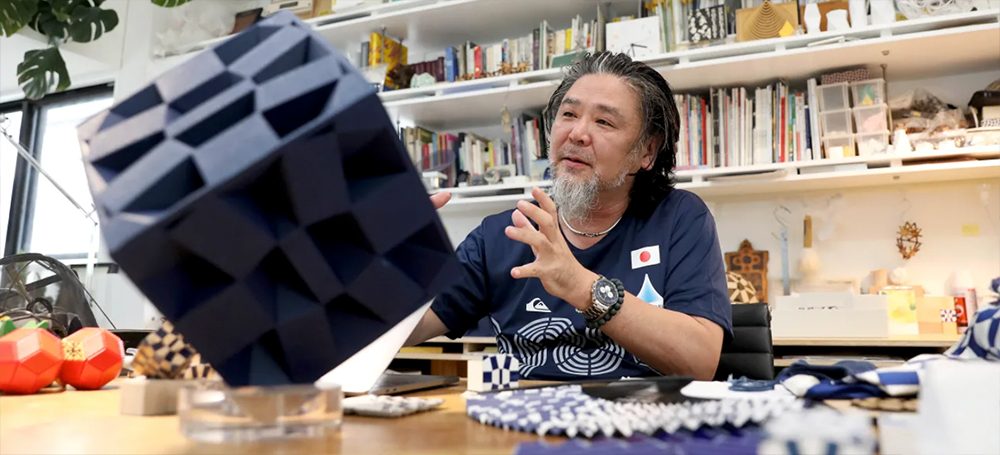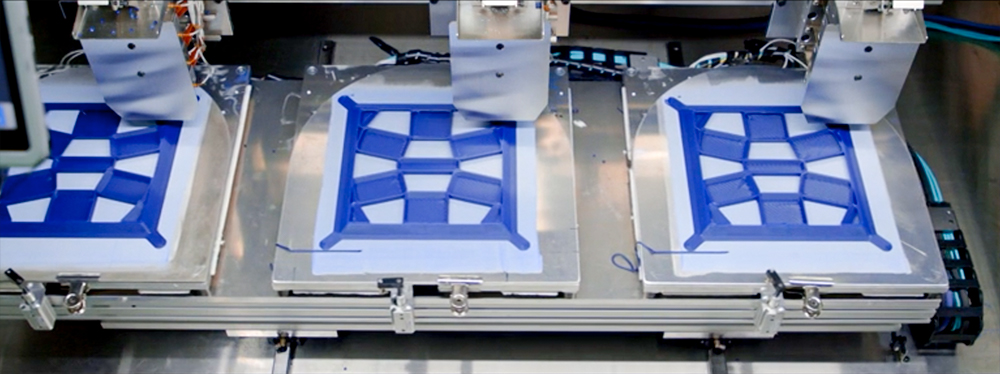Born out of a the sustainability theme of the Tokyo 2020 Olympics, each of the 98 podiums conserve raw materials and save energy because they are 3D printed from recycled plastic and can be recycled again after the games conclude.
Over the past few years, Japanese contributed tons of plastic for the podiums by tossing their empty laundry detergent bottles and shampoo containers into special collection boxes at more than 2,000 locations across the country.
Consumer product giant Proctor & Gamble sponsored the campaign that encouraged the public to recycle. The podium material also includes plastic recovered from the ocean, which is an International Olympic Committee Clean Seas initiative.

Symbolically Significant
Each Olympic – and Paralympic – podium features the official ‘harmonized checkered’ emblem of the 2020 Tokyo games reimagined.
Podium designer Tokolo Asao says the Tokyo 2020 emblems are based on the geometry of diamonds, which he modified to create the pattern on the podiums. The official emblems form a 12-sided polygon – called a dodecagon – that looks a bit like a circle. The podium design was created by reconfiguring the dodecagon into more of a cube shape. In fact, each podium is manufactured from separate 3D printed cubes that Asao hopes will be kept as mementos of the games. “The underlying philosophy was to create something we would want to keep instead of throwing away as rubbish,” he says.

Proctor & Gamble says, after the games, the plastic not used for educational purposes to promote the Olympic movement’s role in the area of sustainability, will be recycled back into packaging for P&G products.
“The Tokyo 2020 Podium Project is an example of how the Olympics can be a catalyst to inspire actions that have a positive impact on the environment and society,” says Marc Pritchard, P&G chief brand officer.
The Olympic ring symbol on the front of the podiums are made of aluminium waste from the temporary housing units built for families affected by the 2011 Fukushima earthquake and tsunami.
Apart from being beautiful, the Olympic podiums each account for 75 grams of carbon dioxide not being released into the atmosphere and an energy savings equal to that used to light a normal house for 112 years.
“In the future, podiums will attract more attention as something to be designed professionally (and sustainably),” says Asao.

License: The text of "Olympians Honored Atop 3D Printed Recycled Plastic" by All3DP Pro is licensed under a Creative Commons Attribution 4.0 International License.